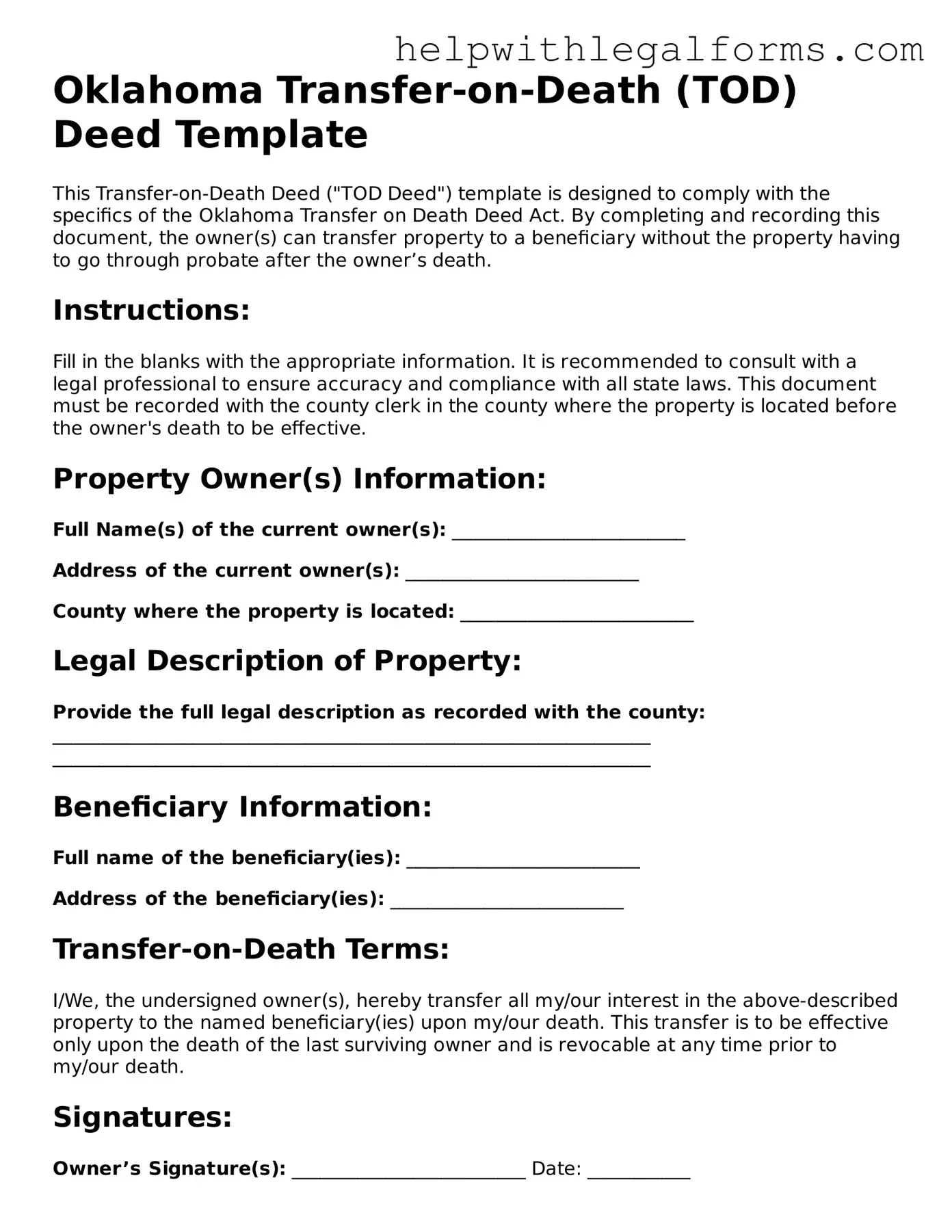Oklahoma Transfer-on-Death (TOD) Deed Template
This Transfer-on-Death Deed ("TOD Deed") template is designed to comply with the specifics of the Oklahoma Transfer on Death Deed Act. By completing and recording this document, the owner(s) can transfer property to a beneficiary without the property having to go through probate after the owner’s death.
Instructions:
Fill in the blanks with the appropriate information. It is recommended to consult with a legal professional to ensure accuracy and compliance with all state laws. This document must be recorded with the county clerk in the county where the property is located before the owner's death to be effective.
Property Owner(s) Information:
Full Name(s) of the current owner(s): _________________________
Address of the current owner(s): _________________________
County where the property is located: _________________________
Legal Description of Property:
Provide the full legal description as recorded with the county:
________________________________________________________________
________________________________________________________________
Beneficiary Information:
Full name of the beneficiary(ies): _________________________
Address of the beneficiary(ies): _________________________
Transfer-on-Death Terms:
I/We, the undersigned owner(s), hereby transfer all my/our interest in the above-described property to the named beneficiary(ies) upon my/our death. This transfer is to be effective only upon the death of the last surviving owner and is revocable at any time prior to my/our death.
Signatures:
Owner’s Signature(s): _________________________ Date: ___________
State of Oklahoma, County of ___________________: This document was acknowledged before me on (date) ___________ by (name of owner) ___________________.
Notary Public Signature: _________________________
Notary Printed Name: _________________________
My commission expires on _______________.
This document does not require beneficiary signature(s) for validity but must be recorded with the appropriate county to be effective.
Recording Information:
Once completed and signed, this document must be filed with the County Clerk’s office in the county where the property is located. It is important to keep a copy of the recorded document for your records.
Disclaimer:
This template is provided as a courtesy and is intended for informational purposes only. It does not constitute legal advice, nor does it substitute for legal counsel. The user assumes all responsibility for its use.
